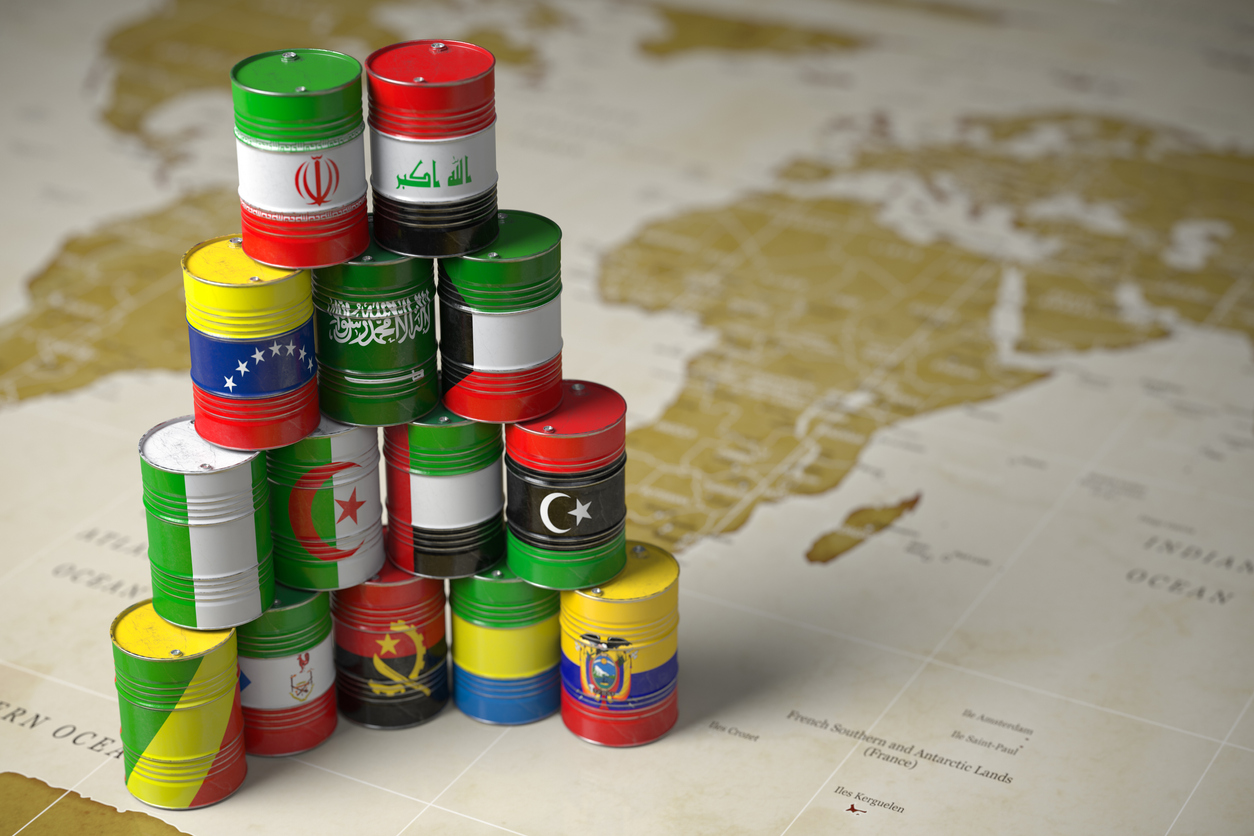When the countries that make up OPEC and OPEC+ met in Vienna at the start of July, they agreed to continue to stick with the production cuts decided upon in December 2018.
In the official press release that came out of the meeting, the members stated that they would continue with lowered production for nine additional months, through March 2020. The joint statement also set December 6, 2019, as the date the next Ministerial Meeting of OPEC and non-OPEC members would come together to discuss production cuts. The group will review its production cuts three months before they are to expire. This makes for the possibility that the production cuts will end before March 2020.
Observing OPEC Leading Up to the Meeting
When OPEC attempts to cut production, the stated intent is to stabilize both supply and prices. “Stability” is the euphemism that OPEC uses to say that it aims to raise prices and revenue. When OPEC+ first announced production cuts in 2016, the cartel intended for the measure to be a temporary one. The production cuts helped prop up prices that had then been in decline for almost two years.
OPEC+ countries were so pleased with how successful the production cuts were in raising prices that they repeatedly extended production cuts several times. Before the latest production cuts were announced, the CME OPEC Watch Tool placed the probability that they would come about at 5 percent. The market appears to have truly believed that there would be no more cuts. There was considerable disappointment that OPEC+ decided to further extend their production cuts.
In the aftermath of the most recent announcement, WTI crude prices dropped 7 percent, from a prior level of approximately $60 in the August contract, to $56. The drop occurred over a period of less than 24 hours. While the price drop was not what OPEC members hoped for, it was the result that that CME crude oil options foretold, in light of the failure of OPEC to put deeper output cuts in place.
Weaknesses Begin to Show
OPEC has been able to exercise less and less influence on oil prices over time. Friction among member states has begun to show as well. While member states are likely to continue to cooperate, Iran has expressed its displeasure at the level of influence that Saudi Arabia exercises over OPEC decisions.
As the relationship between Saudi Arabia and Russia continues to solidify, Saudi Arabia’s influence is only likely to grow. While OPEC, by itself, controls less than half of the world’s crude production, OPEC+ controls a majority. The level of control that the cartel has is vital to its survival, in the face of the spectacular performance of the American oil industry, whose output has risen to over 12 million barrels a day.
The Charter of Cooperation
At the conference in Vienna, OPEC members agreed to formalize the relationship that the cartel had with allies that weren’t a part of OPEC. The Charter of Cooperation, as it is known, needs the approval of Russia and other members of OPEC+, but Iran has been unhappy with recent developments and has said that it may use its veto power to stop the Charter. While Iran finally softened its stance, considerable tensions remain as a result of Saudi Arabia’s support for economic sanctions that the U.S. has imposed on Iran.
The fact that powerful members such as Saudi Arabia and Russia apparently agreed to bring out the new Charter even before it was discussed at the Vienna conference, has made other OPEC members unhappy about their lack of say.
While the new OPEC+ undoubtedly has power, it becomes less relevant with each new development on the world oil scene. According to Sigma Drilling Technologies, a major producer of pulsation control solutions and dampener solutions, two new pipelines that are planned to come online next year will make U.S. shale even cheaper than it is now, and give American producers greater influence. They will also make OPEC slide further into irrelevance on the global oil market.




